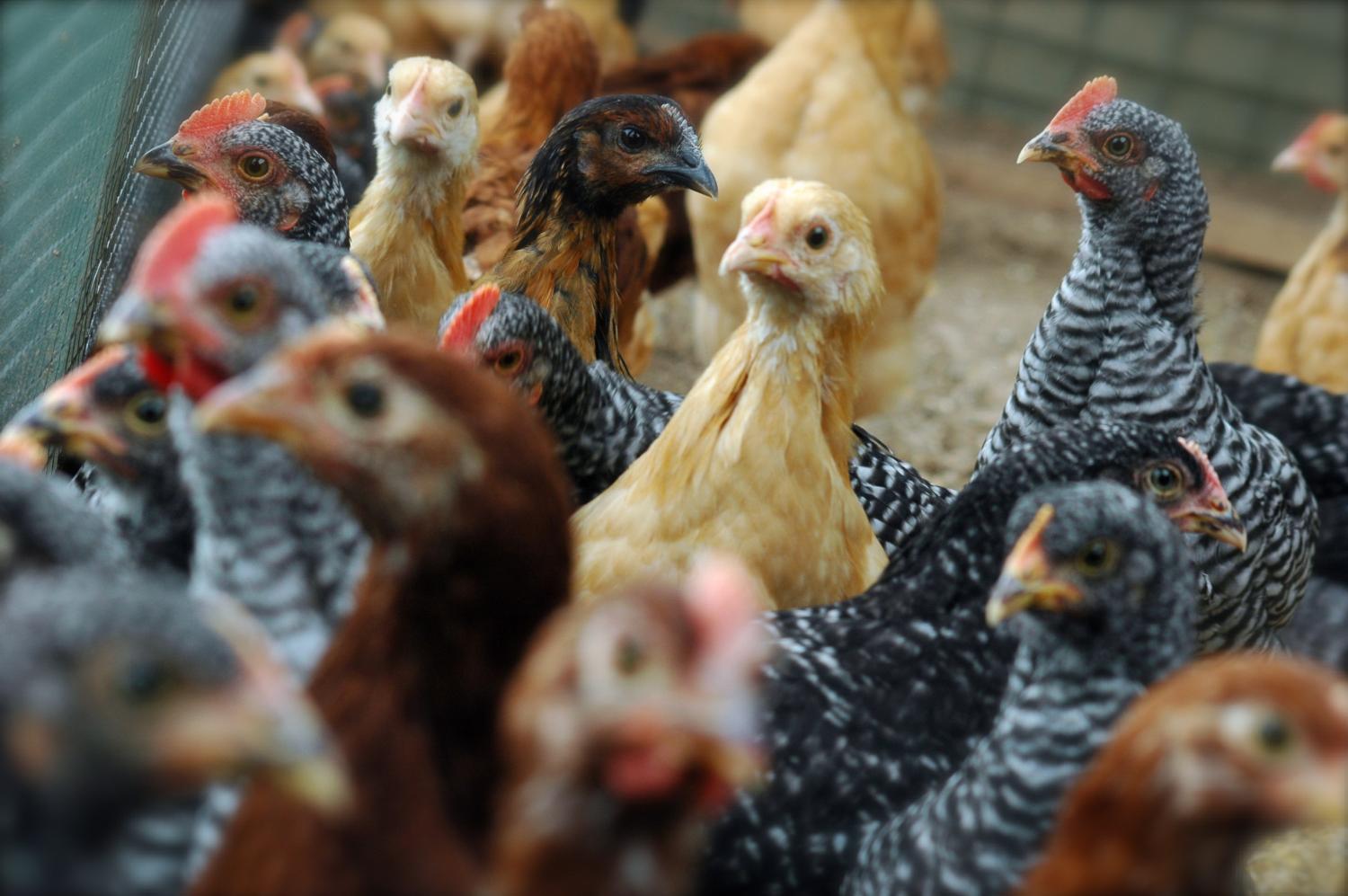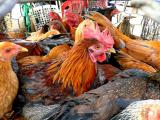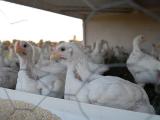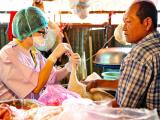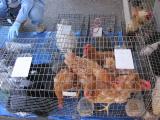A young Chinese woman most likely caught the H7N9 avian influenza virus from her father after caring for him in the hospital, marking the first probable case of human-to-human transmission, according to a report released today in BMJ.
The daughter got sick only after prolonged, close contact with her father, and no cases were found in other family members or in healthcare workers. The authors therefore conclude that the virus has not gained the capability for efficient, sustained transmission.
Although the virus didn't spread further, the transmission event "means there is potential for greater human to human transmission," says the report. It was written by a large Chinese team, with Xian Qi as first author.
The father, a 60-year-old retiree, was in charge of buying food for his extended family, and he occasionally visited live poultry markets, according to the report. In early March he bought six quail at one of the markets and cooked them. On Mar 8 he fell ill with a fever, cough, and shortness of breath, and he was hospitalized on Mar 11.
He was treated with antibiotics, but on Mar 15 he was moved to the hospital's intensive care unit because of respiratory distress. Three days later he was moved to the ICU of a tertiary hospital and treated with oseltamivir. He died of multiple organ failure on May 4.
The man's 32-year-old daughter was healthy and had no known exposure to poultry before her illness. She cared for her father before he was hospitalized and for several days after he entered the hospital. Her father had "abundant expectoration" starting on Mar 14, and, without wearing protective equipment, she cleaned his secretions and maintained his oral hygiene until he entered the ICU.
The young woman fell ill with a fever and cough on Mar 21, six days after her last contact with her father. She was treated with antibiotics and later with oseltamivir, but on Mar 28 she was moved to an ICU and put on a ventilator. On Apr 4 she died of multiple organ failure and cardiac arrest.
Both patients tested positive for the H7N9 virus in late March. When viral isolates from both of them were sequenced, they were found to be nearly identical (99.6% to 99.9% match) but slightly different from an H7N9 virus found at one of the poultry markets visited by the father.
The authors identified 43 close contacts of the two patients, including 39 healthcare workers, 3 household members, and 1 relative. Among these, only the daughter's husband had any respiratory symptoms, a mild fever; he was treated with oseltamivir and tested negative for the virus.
For the rest of the contacts, testing of paired serum samples revealed no H7N9 antibodies. The authors note that the healthcare workers' awareness of personal protection measures was "relatively weak," and they wore surgical masks instead of N95 respirators when caring for the two patients.
The authors write that several findings support the likelihood of transmission between the father and daughter, including the genetic match of isolates from the patients and the young woman's lack of exposure to animals or live poultry markets. They also observe that experiments with ferrets and pigs have shown that the H7N9 virus can bind to both avian and human airway cell receptors and can spread by respiratory droplets under certain conditions.
"Our findings, however, indicated that the virus has not gained the ability for efficient sustained transmission from person to person," the report continues. In their analysis of the two isolates, the authors found no change in the receptor binding site from the avian to the human pattern, and no evidence of asymptomatic or subclinical infections was found in the 43 close contacts.
In other observations, the authors note that the daughter's husband cared for her father for parts of 3 days, without wearing respiratory protection, but didn't catch the virus. This, along with the two patients' blood relationship, suggests the possibility of a genetic component to susceptibility to H7N9, they write.
"To the best of our knowledge, this is the first report of probable transmissibility of this novel virus from person to person with detailed epidemiological, clinical and virological data," they conclude. They add that timely detection and rapid investigation of case cluster are critically important.
In an accompanying editorial, James Rudge and Richard Coker of the London School of Hygiene and Tropical Medicine write that the findings probably do not mean that H7N9 is closer to becoming a fully human virus, according to a BMJ press release.
Limited human transmission "is not surprising, and does not necessarily indicate that the virus is on course to develop sustained transmission among humans," Rudge and Coker write. But they add that the study is "a timely reminder of the need to remain extremely vigilant: the threat posed by H7N9 has by no means passed."
Qi X, Qian Y, Bao C, et al. Probable person to person transmission of novel avian influenza A (H7N9) virus in Eastern China, 2013: epidemiological investigation. BMJ 2013;347 (early online release) [Full text]
See also:
Aug 6 BMJ press release
Jul 25 CIDRAP News story on study showing H7N9 easily infects human lung cells in lab cultures
Jul 18 CIDRAP News story on study showing H7N9 can spread by respiratory droplets among ferrets
